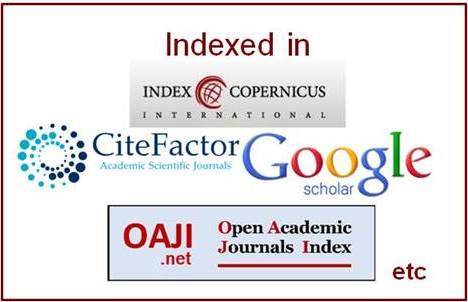ATTACKING OF Ficus spp STRANGLER ON OIL PALM PLANTATION; SRIWIJAYA UNIVERSITY CAMPUS AREA CASE
Abstract
Palm oil (Elaeis guineensis Jacq.) is an important commodity in Indonesia, but the presence of hemiepiphytes of the genus Ficus can inhibit its growth and productivity through a strangulation mechanism. This study aims to identify Ficus species that attack oil palm, evaluate the attack rate, and analyze the influence of stem diameter on plant health. The research was conducted in the roadside area of Sriwijaya University, Indralaya, using a descriptive survey method. The results showed that three species of Ficus attacked oil palm: Ficus benjamina (415 individuals), Ficus retusa (2 individuals), and Ficus sundaica (1 individual). The attack rate reached 24%, belonging to the category of light attack, with 2% of the plants experiencing death. Most Ficus have a small diameter (64.11%) in the range of 1 - <10 cm, with an estimated lifespan of ±5 years, while some individuals >35 cm are estimated to be ±35 years old. The Ficus attack has the potential to reduce palm oil productivity by up to 6% of total production. The results of the study show that Ficus hemiepiphyte has a significant impact on oil palm crops and its population can continue to increase if not controlled.
Downloads
References
Berg, C. C. (2003). Flora Malesiana precursor for the treatment of Moraceae 3: Ficus subgenus Ficus. Blumea-Biodiversity, Evolution and Biogeography of Plants, 48(3): 529–550.
Cintron, G., and Noveli, (1984). Methode for Studying Mangrove Stucture in S.C. Snedaker and J.G. Snedaker. The Mangrove Ecosystem Research Methods. American Journal of Plant Sciences, 11(7): 91–113.
Direktorat Perlindungan Tanaman Pangan. (2000). Laporan Luas dan Serangan Hama dan Penyakit Tanaman Pangan di Indonesia. Jakarta: Direktorat Perlindungan Tanaman Pangan.
Edyson, E., Murgianto, F., dan Ardiyanto, A. (2022). Epiphytic Weeds Control by Root Infusion Method in Oil Palm. Planta Tropika, 10(1): 55–61.
Haryjanto, L., Prastyono, P., and Yuskianti, V. (2014). Variasi pertumbuhan dan parameter genetik pada tiga plot uji keturunan Nyawai (Ficus variegata Blume) di Bantul. Jurnal Pemuliaan Tanaman Hutan, 8(3): 137–151.
Hemmer, W., Focke, M., Götz, M., and Jarisch, R. (2004). Sensitization to Ficus benjamina: relationship to natural rubber latex allergy and identification of foods implicated in the Ficus-fruit syndrome. Clinical and Experimental Allergy, 34(8): 1251–1258. http://doi.org/cfp633
Hengki, A., Soejono, A., and Himawan, A. (2018). Pengendalian Ficus benjamina dan Ficus globosa sebagai parasit gulma di kelapa sawit dengan beberapa herbisida. Jurnal Agromast, 3(1): 1–12.
Hendrayana, Y., Permana, D. T., Nurlaila, A., Adhya, I., and Supartono, T. (2023). Kumpulan Burung dan Mamalia pada Kiara Bunut (Ficus virens) di Hutan Gunung Tilu Kabupaten Kuningan. Logika: Jurnal Penelitian Universitas Kuningan, 14(1): 21–29.
Heyne, K. (1987). Tumbuhan Berguna Indonesia, Volume II. Yayasan Sarana Wana Jaya: Diedarkan oleh Koperasi Karyawan, Badan Litbang Kehutanan, Jakarta.
Ilahi, N. F., and Putri, I. L. E. (2023). Struktur dan Status Regenerasi Alami di Hutan Konservasi Cagar Alam Maninjau Malabur Kabupaten Agam. Jurnal Serambi Biologi, 8(3): 284–297.
Ismiasih, I., dan Afroda, H. (2023). The Faktor Penentu Produksi Kelapa Sawit Rakyat Di Provinsi Riau. Jurnal Penelitian Pertanian Terapan, 23(2): 211–218.
Mo, Yu-Xuan., and Richard T. Corlett, Gang Wang, Liang Song, Hua-Zeng Lu, Yi Wu, Guang-You Hao, Ren-Yi Ma, Shi-Zheng Men, Yuan Li, Wen-Yao Liu. (2022). Hemiephypitic Figs Kill Their Host Trees; Acquiring Phosphorus is a Driving Factor. New Phytologist, 236(2): 714–728.
Moenandir, J. (2010). Ilmu Gulma. Universitas Brawijaya Press, Malang.
Maryam, S., Daningsih, E., and Mardiyyaningsih, A. N. (2024). Identifikasi Tumbuhan Mangrove di Hutan Lindung Padu Empat-Lebak Kerawang Desa Batu Ampar Kabupaten Kubu Raya. Bioscientist: Jurnal Ilmiah Biologi, 12(1): 1382–1396.
Nasution, Y., Adelina, R., and Siregar, C. A. (2024). Pengaruh Media Tanam Dan Pupuk Hayati Pada Pertumbuhan Stek Tanaman Tin (Ficus carica L.). Jurnal AgriNauli, 1(1): 24–31.
Ng, F. S. P. (Ed.). (1981). Tree Flora of Malaya: A Manual for Foresters, Vol. 3 (pp. 6–+).
Putz, F. E., and Holbrook, N. M. (1986). Notes on the natural history of hemiepiphytes. Selbyana, 7(1): 61–69.
Soerianegara, I., and Indrawan, A. (1988). Ekologi Hutan. Fakultas Kehutanan Institut Pertanian Bogor, Bogor.
Suad, L. M., Suryadarma, I. G. P., and Suhartini, I. (2017). Eksistensi dan distribusi beringin (Ficus spp.) sebagai mitigasi pencemaran udara di Kota Yogyakarta. Kingdom: The Journal of Biological Studies, 6(3): 165–176.
Sumihadi, Rafdinal, and Linda, R. (2019). Kepadatan dan pola penyebaran Ficus spp. di Stasiun Penelitian Cabang Panti Taman Nasional Gunung Palung Kalimantan Barat. Protobiont, 8(3): 115–121.
Sutisna. (1981). Komposisi Hutan Bekas Tebangan di Batulicin Kalimantan Selatan, Deskripsi dan Analisis Laporan No. 328. Balai Penelitian Hutan, Bogor.
Tulung, M. (2000). Study of cacoa moth (Canopomorpha cramerella) control in North Sulawesi. Eugenia, 6(4): 294–299.
Siappa, H., Hikmat, A., and Kartono, A. P. (2016). Komposisi vegetasi, pola sebaran dan faktor habitat Ficus magnoliifolia (nunu pisang) di Hutan Pangale, Desa Toro, Sulawesi Tengah. Buletin Kebun Raya, 19(1): 33–46.
Susilowati, A., Rangkuti, A. B., Rachmat, H. H., Dwiyanti, F. G., Harahap, M. M., Iswanto, A. H., and Ginting, I. M. (2022). Keanekaragaman dan Sebaran Tanaman Ara (Ficus spp.) di RTH Universitas Sumatera Utara (USU). Dalam Seri Konferensi IOP: Ilmu Bumi dan Lingkungan, 959(1): 012017.
Veneklaas, E. J., Santos-Silva, M. P. R. M., and Ouden, F. (2002). Determinants of growth rate in Ficus benjamina L. compared to related faster-growing woody and herbaceous species. Scientia Horticulturae, 93(1): 75–85.
Zotz, G., Almeda, F., Bautista-Bello, A. P., Eskov, A., Giraldo-Cañas, D., Hammel, B., Harrison, R., Köster, N., Krömer, T., and Lowry, P. P. II. (2021). Hemiepifit ditinjau kembali. Perspektif dalam Ekologi Tumbuhan, Evolusi dan Sistematika, 51: 125620.
Author(s) and co-author(s) jointly and severally represent and warrant that the Article is original with the author(s) and does not infringe any copyright or violate any other right of any third parties, and that the Article has not been published elsewhere. Author(s) agree to the terms that the GPH Journal will have the full right to remove the published article on any misconduct found in the published article.

























